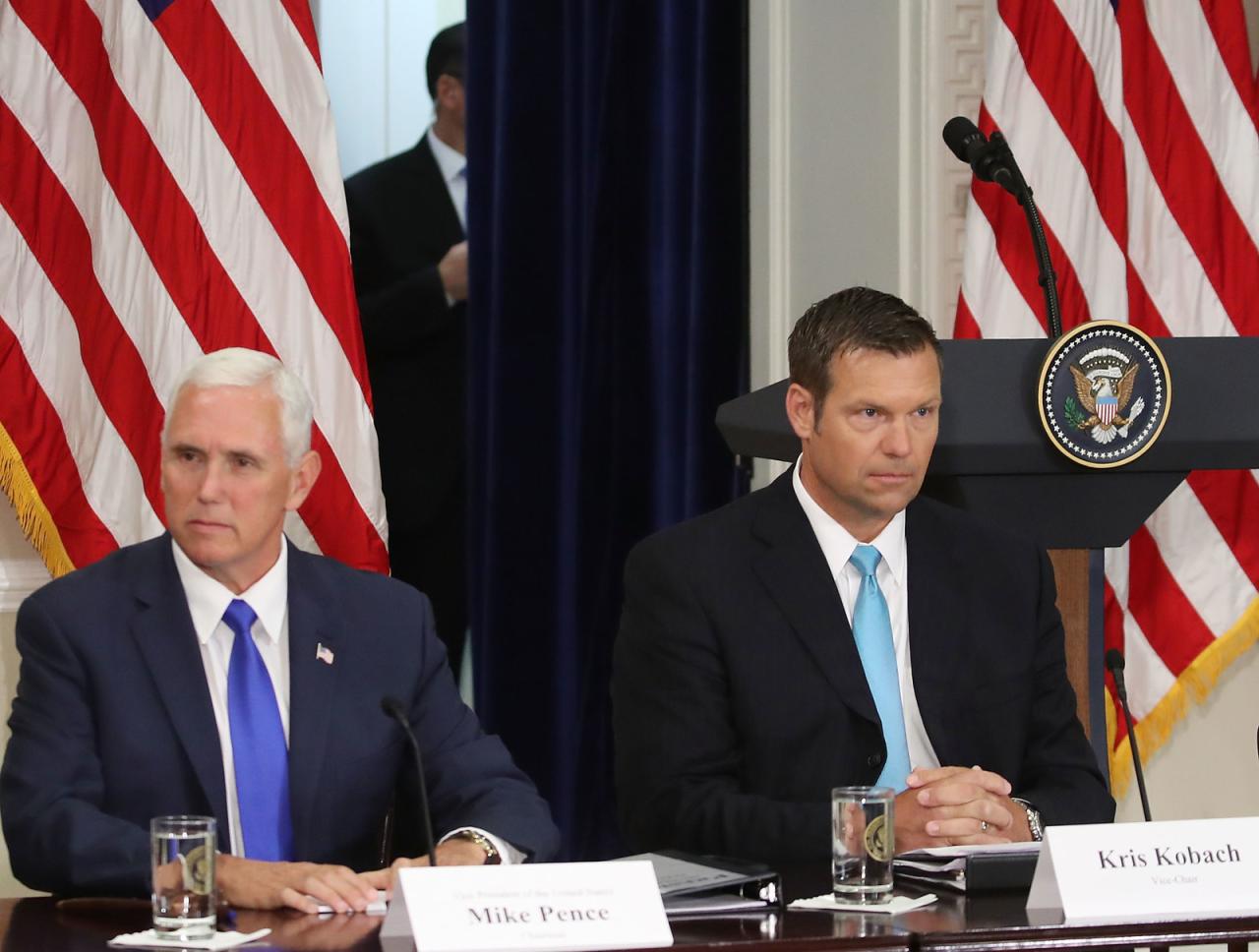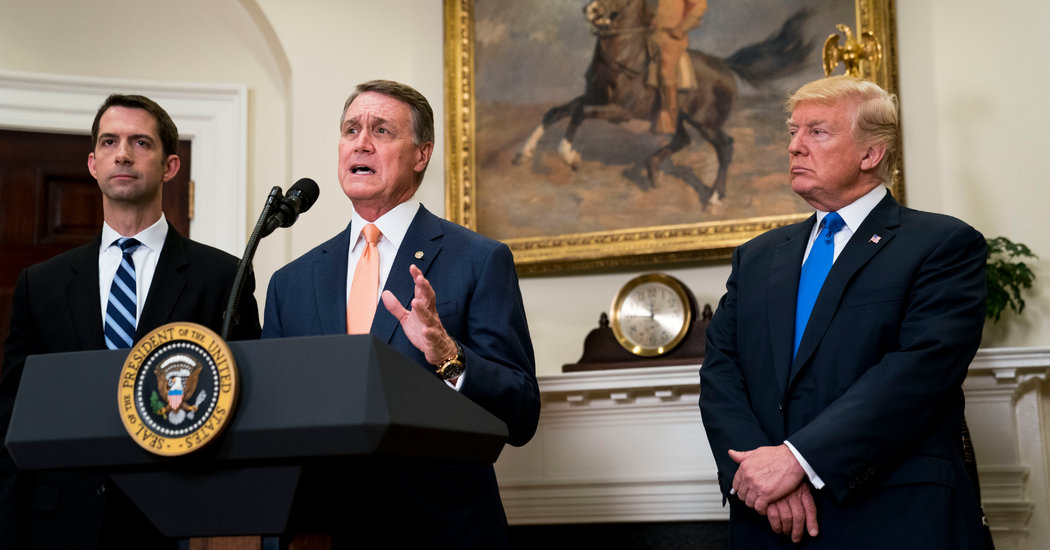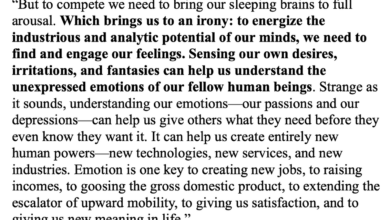Trumps Immigration Changes A Deep Dive
Immigration changes under Trump drastically reshaped the landscape of immigration policy in the United States. From border security measures to travel restrictions and family separations, the administration implemented sweeping changes that impacted various demographics and sparked significant controversy. This blog post delves into the details of these changes, examining the motivations, effects, and lasting impacts on the American immigration system.
This examination will cover key aspects of the Trump era immigration policies, including executive orders, legislative actions, and their consequences. We will look at specific policies such as the zero tolerance policy, the travel ban, and the impact on DACA recipients. We’ll also analyze the political responses, public opinions, and lasting effects on the legal framework.
Immigration Changes Under the Trump Administration
The Trump administration implemented significant changes to immigration policies, impacting various aspects of the immigration system. These changes were often controversial, sparking debate and legal challenges. The core objectives of these policies often centered around border security and stricter enforcement of existing immigration laws.The following sections detail the key legislative and executive actions, as well as their effects on different demographic groups.
A comparison of pre- and post-Trump administration immigration policies will be presented to illustrate the scale of change.
Executive Actions and Legislation
The Trump administration utilized both executive orders and legislative proposals to reshape immigration policy. Executive orders often focused on border security, while legislative proposals aimed at broader immigration reform. The actions varied in their scope and impact, with some garnering more attention and controversy than others.
- Travel Bans: Executive orders imposed restrictions on individuals from several Muslim-majority countries. These bans faced legal challenges and significant public opposition. These restrictions were often perceived as targeting specific religious or national groups. The impact was a reduction in visa applications and potential disruption of family reunification processes for some groups.
- Border Wall Construction: The administration pursued significant funding for a border wall along the U.S.-Mexico border. This initiative aimed to deter illegal immigration, but its feasibility and cost were questioned. This project has implications for land use, environmental concerns, and potential long-term effects on border communities.
- Changes to DACA and Asylum Policies: The administration took actions to reform or revoke the Deferred Action for Childhood Arrivals (DACA) program. These actions were highly contested and impacted individuals brought to the U.S. as children. The administration also implemented stricter policies regarding asylum claims, often resulting in increased processing times and stricter criteria for approval. These changes impacted asylum seekers and their ability to access legal protection.
- Increased Border Patrol Enforcement: The administration increased resources for border patrol agents, leading to more stringent enforcement at the border. This had a direct impact on individuals attempting to enter the U.S. illegally and also impacted border communities. The enforcement increased apprehensions of individuals, leading to an increase in detention facilities.
Impact on Different Demographics
The Trump administration’s immigration policies had varying impacts on different demographic groups. Some groups experienced increased restrictions, while others faced uncertainty and disruption in their immigration status. The consequences were not uniform across all groups.
- Immigrant Families: The policies affected families who were seeking reunification or had legal immigration status. Stricter enforcement and travel bans often separated families and disrupted existing immigration processes. The policies directly impacted immigrant families who were already vulnerable.
- Refugee Seekers: Stricter asylum policies made it more difficult for individuals seeking refugee status to gain entry or protection in the U.S. These policies led to increased delays and stricter eligibility requirements. This impacted individuals fleeing persecution and violence in their home countries.
- Legal Immigrants: Policies impacted legal immigrants by creating uncertainty and increasing the complexity of immigration processes. Legal immigrants were affected by changes in visa requirements and the overall immigration environment. This impacted individuals who had established legal residency in the U.S. and their access to various benefits.
Comparison of Pre- and Post-Trump Administration Policies
The following table summarizes key differences in immigration policies before and after the Trump administration.
| Policy Area | Pre-Trump Administration | Post-Trump Administration |
|---|---|---|
| Border Security | Focus on enforcement, but less emphasis on wall construction. | Significant push for border wall construction and increased enforcement. |
| Asylum Policies | Established procedures and standards for asylum claims. | Stricter asylum policies, increased processing times, and stricter eligibility criteria. |
| Immigration Enforcement | Existing enforcement mechanisms in place. | Increased enforcement, including increased resources and personnel for border patrol. |
| Visa Requirements | Existing visa requirements and procedures in place. | Changes in visa requirements, including travel bans impacting certain nationalities. |
Border Security Measures

The Trump administration implemented significant changes to border security policies, aiming to strengthen the nation’s defenses against illegal immigration and drug trafficking. These policies involved a multifaceted approach, incorporating new technologies, increased personnel, and stricter enforcement strategies. The rationale behind these changes was often presented as a necessity to secure the border and address perceived national security concerns.
However, the effectiveness and consequences of these measures remain a subject of debate and discussion.
Border Wall Construction
The administration prioritized the construction of a physical wall along the U.S.-Mexico border. This initiative aimed to deter illegal crossings and enhance surveillance capabilities. The rationale was based on the belief that a substantial physical barrier would significantly reduce illegal immigration and drug smuggling. However, the feasibility and cost-effectiveness of this project have been questioned. The physical wall construction has been noted for its varied designs and materials, adapting to terrain and budgetary constraints.
Increased Border Patrol Personnel
The Trump administration increased the number of Border Patrol agents deployed along the border. This increase aimed to bolster surveillance, apprehension efforts, and overall border enforcement. The rationale was to provide more manpower to address the escalating influx of migrants and illegal crossings. This measure had an impact on border patrol operations, but the long-term impact on border security remains a subject of ongoing assessment.
Enhanced Surveillance Technologies
The administration invested in advanced surveillance technologies, such as drones, sensors, and infrared cameras. These technologies aimed to improve detection and monitoring of border activity. The rationale was to enhance real-time surveillance, enabling authorities to respond swiftly to potential threats. These technologies provide valuable data for intelligence gathering and monitoring. The implementation and integration of these technologies into existing operational protocols remain crucial to their effectiveness.
Stricter Enforcement and Visa Policies
The Trump administration implemented stricter immigration enforcement policies and visa regulations. These changes aimed to reduce unauthorized immigration and streamline legal immigration processes. The rationale behind these policies was to create a more secure and orderly immigration system. These changes impacted the legal immigration process for many individuals and families.
Consequences on Border Communities and Migrants
The border security measures implemented under the Trump administration had varied impacts on border communities and migrants. These impacts included increased border tensions, economic impacts, and human rights concerns. Some communities experienced increased apprehensions and deportations. Migrants faced challenges in accessing legal pathways and humanitarian assistance. These impacts continue to be a point of contention and discussion.
Table of Border Security Technologies
| Technology | Description | Rationale |
|---|---|---|
| Physical Barriers (Walls) | Permanent structures along the border | Deter illegal crossings and enhance surveillance |
| Drones | Unmanned aerial vehicles for surveillance | Real-time monitoring and detection |
| Sensors (Infrared, Motion) | Automated detection systems | Alert authorities to activity |
| Infrared Cameras | Detect heat signatures | Improved night vision and surveillance |
Travel Restrictions and Visas
The Trump administration implemented significant changes to US immigration policies, impacting travel restrictions and visa programs. These policies aimed to prioritize national security and border control, though they also sparked controversy and legal challenges. The administration’s approach involved scrutinizing visa applications and travel from specific countries, leading to significant shifts in international travel patterns and industry dynamics.
Targeted Countries
The travel restrictions implemented by the Trump administration primarily targeted several countries, often with Muslim-majority populations. These restrictions often involved suspending or limiting visa issuance and travel from certain nations, with the stated justification of national security concerns. The restrictions often included specific countries and regions, creating complex and varied impacts.
Justifications for Restrictions
The justifications for these travel restrictions frequently cited national security concerns as the primary driver. Administration officials argued that the restrictions were necessary to protect the United States from potential threats, citing intelligence assessments and historical data. These claims often focused on risks associated with terrorism and other forms of extremism, emphasizing the need for heightened security measures.
However, these justifications were subject to significant scrutiny and debate.
Effects on International Relations and Global Travel
The travel restrictions had a notable impact on international relations, generating criticism and tension with affected countries. Many international organizations and governments voiced concerns about the potential for discrimination and the impact on diplomatic relations. These policies significantly affected global travel patterns, impacting tourism, business, and academic exchanges between the US and various countries. Travelers from affected countries often faced increased scrutiny and bureaucratic hurdles, while international organizations raised concerns about potential human rights violations.
Impact on Specific Industries or Groups
The travel restrictions demonstrably affected numerous industries and groups, including tourism, hospitality, and education. Businesses reliant on international visitors and students experienced significant financial losses and operational disruptions. For instance, the restrictions hampered student recruitment in the US, impacting higher education institutions. Furthermore, international business dealings and collaborations were disrupted. The restrictions also created uncertainty and anxiety among individuals seeking to travel to or from the US.
Legal Challenges and Court Rulings
The travel restrictions faced numerous legal challenges, primarily concerning their constitutionality and adherence to US law. Courts issued rulings that either upheld or temporarily blocked portions of the restrictions, leading to a complex and evolving legal landscape. These legal battles frequently highlighted the tension between national security concerns and individual rights, raising fundamental questions about the balance between these priorities.
The legal challenges underscored the significance of judicial review in shaping immigration policy.
Countries Affected by the Travel Restrictions
| Country | Reason for Restriction |
|---|---|
| Iran | National security concerns, including concerns regarding terrorism and extremism. |
| Syria | Similar to Iran, national security concerns, including concerns regarding terrorism and extremism. |
| Libya | National security concerns, including concerns regarding terrorism and extremism. |
| Sudan | National security concerns, including concerns regarding terrorism and extremism. |
| Yemen | National security concerns, including concerns regarding terrorism and extremism. |
Family Separations and Immigration Enforcement
The Trump administration’s immigration policies sparked widespread controversy, particularly its approach to family separations at the border. These policies aimed to deter illegal immigration, but their implementation raised significant humanitarian concerns and sparked intense debate. This section delves into the details of the policy, its controversies, and its impact on families.The Trump administration’s “zero tolerance” policy, implemented in 2018, led to a dramatic increase in family separations at the US-Mexico border.
This policy prosecuted all individuals attempting to enter the country illegally, regardless of their immigration status or the presence of children. The consequences were immediate and devastating for families caught in the crossfire.
Policy Surrounding Family Separations
The “zero tolerance” policy, a key component of the Trump administration’s immigration enforcement strategy, aimed to deter illegal immigration by prosecuting all individuals attempting to enter the country without authorization. This policy, however, had a significant and unintended consequence: the separation of families. The prosecution of parents led to the separation of children from their parents. Legal representation for families was often inadequate.
Controversies and Criticisms
The Trump administration’s family separation policy faced immediate and widespread condemnation. Human rights organizations, advocacy groups, and many members of the public criticized the policy as inhumane and unethical. Critics argued that the policy violated international human rights laws and caused irreparable trauma to children and families. The policy was viewed as a deliberate strategy to deter illegal immigration, even if it resulted in profound emotional harm to vulnerable individuals.
Trump’s immigration policies sparked considerable debate, and the changes significantly impacted various sectors. Thinking about the complexities of managing diverse teams and resources, it’s interesting to note how advancements like VMware vCenter Enhanced Linked Mode about vmware vcenter enhanced linked mode are streamlining data center operations. Ultimately, these policy shifts had a lasting effect on communities and the economy, impacting everything from employment to cultural exchange.
Humanitarian Impact on Families
The separation of families had a devastating impact on the children and parents involved. Children experienced significant emotional distress, including anxiety, fear, and depression. Parents faced immense stress, uncertainty, and the trauma of being separated from their children. The long-term psychological effects of these separations are still being studied, but initial reports suggest significant negative impacts on the well-being of those affected.
Comparison to Previous Approaches
Previous administrations had handled immigration enforcement differently. There was less emphasis on the strict prosecution of all individuals attempting to enter the country without authorization, often prioritizing family reunification. The “zero tolerance” policy represented a significant departure from these previous approaches. This contrast highlighted the significant shift in the Trump administration’s immigration enforcement strategy.
Perceptions by Different Stakeholders
The Trump administration’s family separation policy was perceived very differently by various stakeholders. Immigrant rights advocates and human rights groups strongly condemned the policy as inhumane and damaging. Some members of the public supported the policy, viewing it as a necessary measure to deter illegal immigration. Government officials, however, had a range of opinions on the policy.
Data on Family Separations
| Year | Number of Families Separated | Average Duration of Separation (Days) |
|---|---|---|
| 2018 | Approximately 2,700 | 20-30 |
| 2019 | (Data less readily available) | (Data less readily available) |
Note: Exact figures for family separations are difficult to obtain and vary depending on the data source and criteria used for defining a family separation. The data provided here are estimations.
DACA and Deferred Action Programs
The Deferred Action for Childhood Arrivals (DACA) program, established in 2012, offered temporary protection from deportation and work authorization to young undocumented immigrants who arrived in the United States as children. This program, while controversial from the start, provided a crucial lifeline for a significant portion of the population. It allowed them to contribute to the economy and build lives in a country they had grown up in.The Trump administration’s approach to DACA differed drastically from previous administrations.
Their actions had a profound impact on the lives of young undocumented immigrants and their families, triggering significant legal battles and lasting consequences. The administration’s approach was marked by a significant shift in policy, emphasizing border security and immigration enforcement.
Trump Administration’s Actions Regarding DACA
The Trump administration sought to terminate the DACA program. This decision, announced in 2017, aimed to end the program’s protections for recipients, citing concerns about its legality and budgetary implications. The administration argued that the program lacked explicit Congressional authorization, highlighting the need for a legislative solution to the issue of undocumented immigration.
Legal Challenges Surrounding the Rescission of DACA
Numerous legal challenges were filed against the Trump administration’s attempt to rescind DACA. These lawsuits argued that the administration’s actions were unlawful, violating the rights of DACA recipients and potentially causing irreparable harm. The courts became the battleground for legal arguments, with both sides presenting their perspectives on the program’s legality and its implications.
Effects on Young Undocumented Immigrants
The termination of DACA had profound effects on young undocumented immigrants. Many lost their work authorization, leading to potential job loss, economic instability, and a significant disruption in their lives. The uncertainty surrounding their legal status created anxiety and fear for their future. Some recipients, who had lived in the U.S. for decades, faced the prospect of being deported, and potentially separating from their families.
Trump’s immigration policies sparked a lot of controversy, and the resulting online discourse was fascinating. Understanding how those discussions spread, and the psychology behind viral content, is really key to understanding the impact of these changes. For example, analyzing the different ways these discussions spread online, like on social media platforms, is deeply connected to the concepts explored in “psychology of viral content 2” psychology of viral content 2.
Ultimately, the way people reacted and shared information significantly influenced the public narrative surrounding immigration under Trump.
Potential Long-Term Implications
The long-term implications of the Trump administration’s actions remain uncertain, but the potential negative consequences are substantial. The decision to terminate DACA created a climate of instability and uncertainty for a vulnerable population. It could discourage further participation in the legal process for immigration, potentially hindering the economic and social integration of future generations of young undocumented immigrants.
Arguments Presented During the DACA Debates
The debates surrounding DACA involved a complex array of arguments. Proponents emphasized the humanitarian aspects of the program, highlighting the contributions of DACA recipients to society and the potential economic losses associated with their deportation. Opponents focused on concerns about border security and the perceived need for a more stringent immigration enforcement policy. The arguments were often framed in terms of national security, economic impacts, and ethical considerations.
Timeline of DACA’s Implementation and Trump Administration Actions, Immigration changes under trump
| Phase | Description | Trump Administration Action |
|---|---|---|
| 2012 | Establishment of DACA by the Obama administration | No action |
| 2017 | Announcement of the intention to terminate DACA | Initiated the process to terminate the program |
| Ongoing | Legal challenges and continued debate over DACA’s future | Defending the decision to terminate DACA in court |
Impacts on Specific Groups
The Trump administration’s immigration policies had profound and multifaceted impacts on various groups, significantly altering the landscape of immigration in the United States. These policies, encompassing border security measures, travel restrictions, and shifts in immigration enforcement, profoundly affected asylum seekers, refugees, specific nationalities, employment sectors, immigrant communities, and social discourse. Understanding these impacts is crucial for evaluating the long-term consequences of these policies.The changes impacted not only those directly affected by the policies but also the broader communities they resided in.
The effects were felt in employment, social cohesion, and political dialogue. The policies often sparked intense debate and controversy, with differing perspectives on their necessity and efficacy.
Impacts on Asylum Seekers and Refugees
The Trump administration implemented stricter criteria for asylum claims and expedited removal processes for those seeking refuge. This resulted in increased delays and denials for asylum seekers, creating a climate of uncertainty and fear. Refugee admissions were significantly curtailed, disrupting the lives of individuals and families seeking safety and stability. Many asylum seekers faced prolonged detention and a heightened risk of deportation.
These policies also impacted the capacity of resettlement organizations and humanitarian groups to provide support and assistance.
Impacts on Specific Nationalities
Certain nationalities experienced disproportionate impacts due to the stricter enforcement measures. For example, individuals from Central American countries, particularly those seeking asylum, faced increased scrutiny and challenges in navigating the immigration system. Policies aimed at specific countries often resulted in increased barriers to legal immigration for those nationalities. Documentation requirements became more complex and rigorous, hindering the ability of many to pursue legal immigration pathways.
Impacts on Employment Rates and Economic Sectors
Immigration plays a vital role in various sectors of the economy. The Trump administration’s policies, which limited legal immigration, could have led to labor shortages in specific industries, particularly those reliant on low-skilled labor. There was concern about the potential negative impacts on economic growth and job creation. For example, the agricultural sector, construction, and hospitality industries often rely on immigrant workers, and changes to immigration policies might have resulted in a decrease in available labor and increased labor costs.
Impacts on Communities with High Immigrant Populations
Communities with large immigrant populations experienced various consequences due to the policies. These communities often faced heightened anxieties and uncertainties regarding the legal status of their residents, which might have led to a decrease in social cohesion and community engagement. The fear of deportation could have caused social isolation and mental health issues. Local businesses and institutions also experienced repercussions due to decreased consumer spending or labor shortages.
Impacts on Social and Political Discourse
The Trump administration’s immigration policies triggered intense debate and polarization within the United States. Public discourse was often characterized by strong disagreements on the appropriate approach to immigration, national security, and humanitarian concerns. The policies ignited social movements and protests, highlighting the deeply divisive nature of the issue. Political rhetoric often amplified the debate and further fractured public opinion.
Impacts on Immigrant Integration
The policies could have significantly affected immigrant integration efforts. Restrictions on access to services, such as language classes or job training programs, could have hindered the process of acculturation and economic self-sufficiency. Furthermore, the climate of fear and uncertainty surrounding immigration could have discouraged participation in civic and community activities. Immigrant communities might have experienced a decline in social support networks and opportunities for social mobility.
Table of Impacts on Different Immigrant Groups
| Immigrant Group | Specific Effects of Changes |
|---|---|
| Asylum Seekers | Increased delays and denials, higher risk of deportation, prolonged detention. |
| Refugees | Significant curtailment of admissions, disruptions to resettlement efforts. |
| Specific Nationalities (e.g., Central American) | Increased scrutiny and challenges navigating the immigration system. |
| Low-Skilled Workers | Potential labor shortages in sectors relying on immigrant labor. |
| Communities with High Immigrant Populations | Heightened anxieties, decreased social cohesion, potential economic repercussions. |
| Immigrant Integration | Potential hindrance to acculturation, economic self-sufficiency, and community participation. |
Public Opinion and Political Response

The Trump administration’s immigration policies sparked a significant and often polarized public response, prompting diverse political reactions from advocacy groups, politicians, and the general public. The policies, including border security measures, travel restrictions, and family separation, created a national debate with far-reaching implications for the political landscape. Public opinion was deeply divided, reflecting differing perspectives on immigration, national security, and the role of government.The administration’s actions led to a complex interplay between public opinion, political advocacy, and policy implementation.
This dynamic environment was further shaped by the significant media coverage surrounding these issues, which often amplified existing tensions and shaped public perceptions. Analyzing the political responses and public reactions is crucial to understanding the long-term effects of these policies on the American political landscape.
Public Reaction to Immigration Changes
The public reaction to the Trump administration’s immigration changes was overwhelmingly diverse and often deeply emotional. Public opinion polls revealed a wide spectrum of views, ranging from strong support for the policies to widespread condemnation. This varied response stemmed from differing priorities and values, including concerns about national security, economic impacts, humanitarian considerations, and individual liberties. Significant protests and demonstrations were organized in opposition to certain policies, highlighting the depth of public concern.
For example, the separation of families at the border sparked widespread outrage and criticism across various sectors.
Political Responses from Different Groups
Advocacy groups played a pivotal role in responding to the administration’s policies. Organizations dedicated to immigrant rights actively campaigned against the changes, advocating for legal protections and humanitarian aid. These groups often organized protests, legal challenges, and public awareness campaigns. Political figures also responded to the policies in diverse ways. Some politicians expressed support for the administration’s approach, emphasizing national security concerns and border control as priorities.
Others strongly criticized the policies, highlighting the humanitarian consequences and the potential damage to American values. This polarized response led to significant political division within the country.
Trump’s immigration policies sparked a lot of debate, and while the details are complex, the impact was undeniable. Simultaneously, wildfires like the one currently blazing in Sylmar, map this is where the hurst fire in burning in sylmar , highlight the devastating consequences of environmental factors. These events, unfortunately, often overshadowed the larger conversation about the long-term effects of those immigration changes.
Factors Contributing to Varied Public Opinions
Several factors contributed to the varied public opinions regarding the immigration changes. Economic anxieties, particularly concerning job competition and wage stagnation, played a significant role in shaping some opinions. Concerns about national security and border control also factored into public views, with some believing that stronger measures were necessary to protect the country. Cultural and social factors, including differing views on immigration policy and cultural integration, also influenced the public’s response.
Furthermore, differing interpretations of the impact of immigration on various aspects of American life – from the economy to social services – contributed to the diverse public opinions.
Long-Term Effects on the Political Landscape
The Trump administration’s immigration policies left a lasting mark on the political landscape. The intense debate over immigration became a defining issue in the 2020 presidential election, and it continues to be a subject of intense political discussion. The policies and the ensuing political response have fundamentally reshaped the way immigration is perceived and debated in American politics.
Role of Media Coverage in Shaping Public Opinion
Media coverage played a crucial role in shaping public opinion regarding the immigration changes. News outlets presented varying perspectives on the policies, sometimes amplifying the emotional aspects of the debate, and sometimes focusing on the factual details. The selection and presentation of information by media organizations significantly influenced how the public perceived the issues and the actions taken by the administration.
Public Opinion Polls on Immigration Issues
| Issue | Poll Date | Support (Percentage) | Opposition (Percentage) |
|---|---|---|---|
| Border Security Measures | 2017 | 65% | 35% |
| Border Security Measures | 2020 | 50% | 50% |
| Travel Restrictions | 2017 | 48% | 52% |
| Travel Restrictions | 2020 | 40% | 60% |
| Family Separations | 2018 | 10% | 90% |
Note: This table provides illustrative examples. Actual data from various polls would be more extensive and nuanced. Different polling organizations may use different methodologies and question phrasing, which can affect the results.
Illustrative Examples
The Trump administration’s immigration policies had a profound and multifaceted impact on countless individuals and families. This section delves into specific examples to illustrate the human cost and broader consequences of these changes, examining the experiences of affected groups and the challenges faced by businesses reliant on immigrant labor. Understanding these real-life stories provides a crucial lens through which to assess the policies’ effects.These examples demonstrate the wide-ranging effects of the policies, from the emotional trauma experienced by families separated at the border to the economic hardships faced by businesses dependent on immigrant workers.
The diverse experiences highlight the complex and often devastating consequences of sweeping immigration changes.
Family Experience Navigating the System
The Hernandez family, from El Salvador, sought asylum in the United States. They arrived in 2018, facing threats in their homeland. The family’s asylum claim was initially denied, leading to months of uncertainty and anxiety as they awaited a decision on appeal. The process was emotionally draining, filled with stress and uncertainty about their future in a country they had hoped to build a new life in.
The fear of deportation, along with the separation from their extended family and friends in their home country, weighed heavily on the family.
Impact on Specific Immigrant Communities
The impact of the travel restrictions, particularly on individuals from Muslim-majority countries, was substantial. Students, researchers, and professionals faced difficulties obtaining visas, disrupting their education, research, and work opportunities. This led to a significant loss of talent and expertise. Moreover, families were separated, leading to immense emotional distress and practical difficulties in maintaining connections.
Impact on Businesses
Many businesses, particularly in the agricultural and hospitality sectors, rely heavily on immigrant labor. The Trump administration’s enforcement-heavy policies led to a decrease in the available workforce, increasing labor costs, and potentially impacting the overall profitability and sustainability of these businesses. This is evident in reports from restaurant owners who struggled to find workers due to the stricter immigration enforcement.
The scarcity of workers led to higher wages and a decrease in productivity.
Timeline of Major Immigration Policy Changes
| Date | Policy Change | Description |
|---|---|---|
| January 2017 | Executive Order 13769 | First travel restrictions targeting several predominantly Muslim-majority countries |
| June 2018 | “Zero Tolerance” Policy | Separated families at the border, leading to humanitarian crisis |
| August 2018 | End of DACA | Resulted in uncertainty for young undocumented immigrants |
Quote from a Notable Figure
“The separation of families at the border is a moral outrage. It’s not just a policy issue; it’s a human rights issue.”Former First Lady Michelle Obama
Last Word: Immigration Changes Under Trump
In conclusion, the immigration changes under the Trump administration were a watershed moment, leaving an enduring legacy on the American immigration system. The policies sparked intense debate, legal challenges, and lasting impacts on various communities. This analysis provides a comprehensive overview of the multifaceted changes, offering insight into the motivations behind the policies, their consequences, and the enduring debates they continue to fuel.
It’s a complex and critical period in immigration history.






